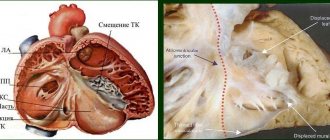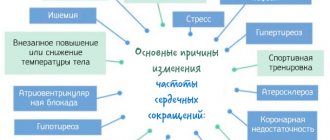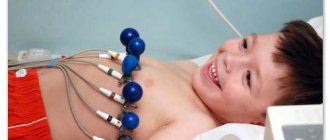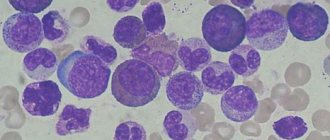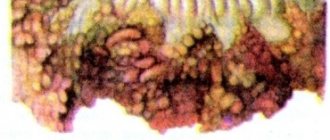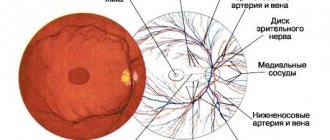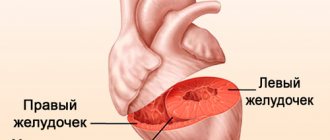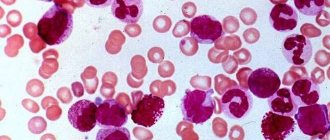There are many pathologies of the musculoskeletal system. One of the rare diseases is Kimmerly's anomaly, in which a small bony arch forms in the first vertebra of the cervical spine.
This condition is dangerous, the formation compresses the artery that supplies the brain, as a result it suffers from lack of nutrition. According to ICD-10, the disease is usually coded Q76.4 - congenital anomalies of the spine and chest.
The main symptoms of Kimmerly's anomaly
What is Kimmerly syndrome (anomaly) is well known to 12 to 30% of people around the world.
In most cases, this is a congenital disease that develops as a result of disruptions in the development of the unborn child. Doctors also include cervical osteochondrosis, a disease of modern adults, as provoking factors. Kimmerly syndrome does not have clear and characteristic signs; indirect symptoms include neurological disorders. This:
- auditory and visual hallucinations and phenomena - noise, squeaking, whistling, darkening, “spots” in the eyes;
- dizziness;
- migraine;
- disorientation in space;
- changes in gait - weakness, uncertainty, staggering;
- loss of consciousness for several minutes;
- temporary decrease in performance;
- increased fatigue;
- stress, deterioration of psycho-emotional health;
- nightmares, insomnia;
- muteness of the facial muscles;
- rarely – neuroses, panic attacks.
Manifestations occur with increased physical activity (usually on the back), causing an increase in blood pressure. It is recommended to treat the disease in cases where its symptoms disrupt the usual rhythm of life and affect work activities and family relationships.
Therapy in this case is only possible through surgery. Why is the Kimmerly anomaly dangerous? It can cause ischemia or stroke, which in many cases leads to disability and even death.
Types of vascular disorders in Kimmerly anomaly
Kimmerly's anomaly develops in the cervical spine. To the right and left of the vertebrae, through the openings in them, arteries pass. They are located from the collarbones to the brain, entering it through the occipital aperture. It is these two vessels and the capillaries adjacent to them that provide nutrition to the tissues of the spinal cord and brain.
- With Kimmerly's pathology, an additional bridge is formed in the first vertebra - the atlas - the blood vessels are compressed, and internal blood flow is disrupted. Difficulty in blood movement is not constant; a dangerous syndrome occurs only with active head movement - playing sports, sudden movements, etc.
The anomaly is considered one of the main causes of the development of vertebral artery syndrome, but the complication does not occur on its own, it is provoked by other vascular disorders:
- atherosclerosis;
- diseases of the walls of blood vessels;
- high blood pressure.
The list of provoking diseases, in addition to pathologies of the cervical spine, includes traumatic injuries to the bones of the skull, spine, and shoulder, which affect the condition of the arteries supplying the brain.
Symptoms
With Kimmerly's anomaly, symptoms are expressed depending on the degree of compression of the vertebral artery, as well as the nerve. Often provoked by awkward movements in the cervical region, they appear with strong bends and turns of the head, prolonged static load on the neck area, when the volume of blood passing through the artery decreases by 25%. Irritation of the nerve leads to an increase in the tone of the arterial walls, then the speed of blood flow drops by 1/3.
Based on the severity of symptoms, there are three degrees of severity of the pathology:
- Easy. Includes pain, decreased blood flow to the head area, liquorodynamic pathologies (impaired production, absorption and circulation of cerebrospinal fluid).
- Average. To the symptoms characteristic of the first degree are added autonomic dysfunctions (functional disorders caused by decreased vascular tone: neuroses, hypertension). There are several attacks a year.
- Heavy. Attacks occur weekly or monthly.
Main signs and symptoms of the anomaly:
- dizziness (98% of patients complain);
- headache (mainly in the back of the head);
- blurred vision, periodic appearance of spots, dots, glare, sparks, sudden darkening;
- unsteady gait;
- tinnitus (humming, ringing, knocking, hissing);
- fainting, a sharp feeling of weakness in the muscles, often accompanied by nausea and vomiting.
Some people experience panic attacks: a feeling of heat in the neck and head, causeless fear, a feeling of suffocation.
In severe forms of pathology, the following disorders are observed:
- tremor (uncontrollable shaking) of the legs and arms;
- voluntary eye movement (nystagmus);
- background headache;
- persistent weakness of certain muscles;
- ischemic attacks.
In the latter case, there is a serious threat to life, so if you have several recurrent or persistent symptoms, you should seek diagnosis.
Diagnosis of Kimmerly anomaly
Pathology is usually discovered accidentally during an X-ray to identify the causes of neurological disorders. X-ray is not the only way to diagnose the disease; the following examinations can also determine it:
- MRA is a magnetic resonance imaging (MRI) aimed at studying the condition of blood vessels (angiography). This diagnostic method is used when a patient is suspected of having tumors in the brain or blood clots. The advantage of the technique is the ability to obtain several photographs of the affected area from different angles.
- Ultrasound with Dopplerography. Studies the speed of blood flow and the condition of blood vessels. An ultrasound image with a detected anomaly is attached to the examination protocol and a detailed description of all the nuances of the detected appendix.
- Color duplex scanning. A variant of ultrasound examination using Doppler, which studies exclusively the condition of the veins and arteries of the neck, the presence of anomalies and pathologies in them.
Photos obtained during X-ray diagnostics are the least informative, but this is the easiest and most accessible way to detect a malformation in a patient or verify its absence.
Diagnostics
Basically, the entire symptom complex of Kimmerly's anomaly is associated with concomitant diseases. Therefore, doctors of neurological practice first of all set themselves the task of identifying the exact cause of vertebrobasilar insufficiency. For this purpose the following is carried out:
- X-ray of the skull and cervical spine;
- magnetic resonance angiography of cerebral vessels;
- transcranial Doppler sonography;
- duplex scanning;
- studies of qualitative and quantitative functions of the vestibular apparatus.
If the patient complains of tinnitus, an additional consultation with an otolaryngologist is scheduled.
Varieties and forms
In the language of doctors, the disease is called atlas malformation, which translated from Latin can mean “anomaly in structure and development.” It has several forms and flow options.
The first section of the classification is the degree of severity:
- complete - the bony arch is connected to another ligament located in the atlas. Over time, they become denser and increase in size due to the accumulation of calcium salts. The diameter of the hole decreases, the load on the artery increases several times;
- incomplete (partial) – final closure does not occur, because there is no secondary ligament; There are no clear signs of pathology, exacerbations occur in the presence of provoking factors.
Form of pathology:
- Congenital. Kimmerly's anomaly develops in a child in the womb and usually appears at school age. The reasons for its formation are not known, so genetics cannot influence its formation. It is possible to live with the disease; it is recommended to see a doctor and undergo a number of treatment procedures.
- Purchased, has the prefix C1. It is formed as a consequence of existing pathologies of the cervical spine and threatens with serious consequences and health complications.
By location:
- one-sided pathology - one of the arteries supplying the brain is subjected to pressure;
- bilateral - arches on both sides of the vertebrae, blood supply is impaired in both vessels.
Classification
Depending on how the additional bone bridge is located, the developmental pathology can be complete or partial, located closer or further from the midline.
Full and incomplete
A complete anomaly occurs if the arch forms a closed bone ring, and if it is incomplete, it looks like an arched outgrowth, but the hole remains open.
Medial and lateral
If the articular process of the atlas is connected by a bridge to the posterior arch, then a medial Kimmerly anomaly is diagnosed, and with a lateral pathological formation, the bone growth extends from the process of the atlas to the transverse arch.
We recommend reading the article about pain in the heart when taking a deep breath. From it you will learn about the causes of pain, contacting a doctor and diagnostic methods.
And here is more about the difference between heart pain and neuralgia.
Treatment methods for the disease
Treatment for Kimmerly's anomaly is usually not required. In 90% of cases, it is asymptomatic and, if the patient leads a measured lifestyle, does not affect his health and life expectancy. If the diagnosis is established, the patient will be recommended to undergo courses of maintenance therapy - taking medications or courses of physical therapy.
Conservative therapy
Doctors prescribe medications as medications for:
- improving cerebral circulation;
- thinning the blood and enhancing its movement through the vessels;
- eliminating strain on the neck muscles (antispasmodics);
- improving metabolic processes in brain tissue;
- pain relief;
- stabilization of blood pressure.
Massages and physiotherapy
The list of the latter includes:
- massage of the cervical spine;
- therapeutic exercises (therapeutic gymnastics);
- manual therapy.
Treatment in this way can only be done under the supervision of a specialist; improper execution of exercises or excessive pressure on the vertebrae increases the risk of injury to the process and perforation of the blood vessel. The result of such amateur activity can be hemorrhages in the brain and death of its cells from lack of nutrition.
Therefore, practicing gymnastics and other types of physical therapy using video lessons downloaded from the Internet or descriptions of exercises on the Internet is strictly prohibited.
During maintenance therapy, you need to carefully listen to the sensations, and, if pain appears or existing symptoms intensify, stop it immediately. Proper therapy can significantly alleviate the patient’s condition:
- reduce or completely get rid of disturbing manifestations;
- reduce the risk of complications - the development of concomitant diseases, the appearance of new symptoms;
- strengthen the muscles, which will provide proper support for the spine;
- improve the tone of the veins and arteries supplying the skull;
- relieve muscle spasms in the cervical region.
Surgery
If the condition becomes more complicated and medication does not bring results, the help of surgeons will be required. Surgery for Kimmerly syndrome is a last resort, but only it will completely eliminate the pathology and return you to a full life.
Treatment
Treatment of the anomaly is prescribed in the presence of clinical symptoms. If there is no hemodynamic (blood supply) disturbance, then observation is recommended, as well as prevention of complications.
For example:
- avoid physical overexertion;
- do not engage in sports involving active movements of the neck;
- do not perform headstands or take long static poses that require fixing the neck in an awkward position.
For pathologies such as Kimmerly's anomaly, doctors use two types of treatment approaches: conservative and surgical. The choice is made depending on the patient’s condition and examination results. Treatment of the cervical spine with C1 anomaly is possible using conservative methods, if the blood flow velocity is not reduced to a critical value. In some cases, delaying surgery can lead to irreparable consequences. The tactics for treating the patient are selected in accordance with the symptoms, taking into account concomitant diseases.
Conservative therapy
The main goal of conservative therapy is to normalize the speed and volume of blood flow in the vertebral artery, improving the mechanical characteristics of blood, called rheological properties (viscosity). In the first case, drugs such as Cavinton, Devincan, Sermion are prescribed, in the second - Trental, Pentoxifylline.
Therapy is supplemented with the following means:
- neuroprotectors that protect brain neurons from negative effects: Cerebrolysin, Actovegin;
- Metabolics that regulate the speed and quality of the body's metabolic processes: Mildronate, Piracetam;
- antioxidants (Mexidol);
- nootropic drugs are neurometabolic stimulants that improve metabolism in nerve tissues (“Noben”).
For severe pain, antispasmodics are prescribed. Intravenous ozone and laser therapy is used, and novocaine blockade of points in the vertebral arteries is performed.
Special training and exercises for abnormalities - therapeutic exercises, stretching help to properly strengthen the neck muscles, relieve their pressure on the vertebrae, and help maintain the thickness of the cartilage discs. Balanced aerobic exercise at a low pace (walking, elliptical, stepper) is useful. This will provide an additional flow of oxygen to the brain cells.
Conventional massage and manual therapy aimed at developing the collar zone can be dangerous in the presence of an anomaly, since in a third of cases with this pathology the pressure of the cerebrospinal fluid is increased. Forced blood flow to the back of the head will be harmful. Only a qualified specialist can perform such procedures, and under medical supervision of the results.
You can use craniosacral therapy techniques (working with the bones of the whole body) aimed at improving the functioning of the entire central nervous system. Acupuncture provides a pronounced and long-lasting relaxing effect.
Surgery
Surgery for an anomaly becomes necessary if the symptoms of insufficient blood supply are not relieved by conservative methods, the patient continues to complain of headaches, dizziness, fainting, and vision and hearing progressively decrease. Typically, this situation occurs when both vertebral arteries are compressed.
The operation is carried out using optical amplification devices. Access is made through a small incision in the atlas area, exposing its posterior arch. Usually, after removal of the bone bridge, scar changes and narrowing are visually visible in the freed area of the artery, which confirms the pathogenetic significance of the anomaly. Scars, if present, are carefully excised.
After the operation, the cervical spine is fixed with a Shants collar for about 2 weeks. Antispasmodic therapy (No-Shpa) is prescribed. Complications are rarely recorded. In 95% of cases, normalization of blood flow and elimination of symptoms are recorded.
The dosage for taking any folk remedy or medication should be prescribed by your attending physician.
Anomaly in children
In children, the pathology is easier, it is congenital and less dangerous to health. However, parents should conduct a comprehensive examination of the baby in the first year of his life and try to identify all possible pathologies.
This is due to the fact that the disease can affect the usual rhythm of life and become fatal if one decides to connect his life with professional sports.
The presence of an anomaly requires compliance with the following rules:
- regular medical examination;
- refusal of any physical activity, especially sports activities;
- warning massage therapists, chiropractors and other physical therapists about the presence of an appendage.
What is the danger of pathology without treatment?
In addition to the classic Kimmerly anomaly, the disease has a number of other names: Kimmerle anomaly, Kimberly anomaly, Kemerly anomaly. Regardless of its designation, it has one consequence – a decrease in the supply of oxygen to brain cells.
This threatens with neurological disorders, which, as they progress, can lead to the development of ischemic stroke, which, in turn:
- disability;
- paralysis (complete or partial);
- of death.
Reviews on forums indicate that when people lost consciousness as a result of the anomaly, people received serious injuries and injuries. This fact can also be attributed to complications of the disease.
Kimmerle Anomaly and the Army
For many young men living with this diagnosis and their parents, the question becomes important: will they be accepted into the army with Kimmerly’s anomaly? This depends on the severity of the disease and associated complications.
If a guy rarely consults a neurologist during his life and does not complain about his health, he will be considered fit for military service. If the neurologist’s conclusion indicates serious cerebral circulatory disorders, especially those requiring treatment in a clinic or hospital, the conscript will be decommissioned.
Causes of the anomaly
At the moment, the causes of the Kimmerle anomaly and the factors that provoke the development of the malformation are not clear. Experts divide this pathology into several types, which sometimes explains their origin, for example, congenital and acquired. According to statistics, 10% of newborns have such a bridge. The development of an acquired anomaly is associated with diseases of the spine.
Eliminate the anomaly or treat associated diseases
The opinion of doctors from the Burdenko Research Institute is clear - if the disease does not bother you, there is no need for surgical intervention. Any operation, even planned and performed hundreds of times, is a risk to life and a significant threat to health. No neurosurgeon can give a 100% positive prognosis for it.
The cost of surgical treatment is hundreds of thousands of rubles.
It is worth resorting to removal of the appendix if disturbances in brain activity become pronounced, the patient’s quality of life decreases, and severe complications arise.
Is it possible to live with this pathology?
Almost 90% of patients with this diagnosis live normal, full lives. If you carefully monitor your health, undergo regular examinations and courses of supportive treatment, the disease will manifest itself with rare and mild symptoms.
There are no exact statistics on how long patients with Kimmerli’s anomaly live - all indicators are individual and the cause of death is not always associated with vascular disorders.
Doctor's advice
Preventive measures are common recommendations for maintaining a healthy lifestyle.
The list of medical recommendations includes:
- giving up bad habits - alcohol, psychotropic and narcotic substances, smoking, which can worsen the functioning of the circulatory system and affect the quality of brain function;
- eat right - many foods affect the development of pathologies of bone and cartilage tissue, heart and blood vessels, and therefore should be excluded from the menu;
- perform recommended physical exercises - there are many activities that can strengthen the muscular corset without threatening the course of the pathology (physical therapy, swimming, yoga);
- refuse heavy physical activity;
- regularly undergo medication and physiotherapeutic treatment.
It is impossible to cure the anomaly with alternative medicine, but there are folk recipes that can complement conservative therapy. Discuss them with your doctor before using them.
Prevention of Kimmerly syndrome during pregnancy
Since some people are born with an already formed syndrome, it makes sense to apply the principles of prevention during pregnancy. After all, genetic predisposition does not guarantee 100% of its development in a child.
A pregnant woman should regularly visit a doctor, take all necessary tests and eat according to the plan suggested by the specialist. It is very important not to drink alcohol or smoke during pregnancy. You need to keep your psyche calm, don’t get nervous and sleep at least 8 hours a day. And specifically at night, since some hormones are produced only in the dark. You need to walk more in the fresh air, but protect your body from hypothermia.
Patient reviews
On medical forums dedicated to this diagnosis, you can find reviews from patients describing disturbing symptoms and asking whether the pathology can be cured. The experts’ answers are clear: first you need to undergo a full examination, which will confirm the cause of the symptoms, and obtain a neurosurgeon’s opinion. It is the latter who will decide whether surgery is required.
Most often, patients complain of:
The specialist’s recommendation is to undergo a course of manual therapy.
The doctor’s advice is to undergo a full diagnosis, establish all related diagnoses and, if necessary, begin a course of medication and physiotherapeutic treatment.
